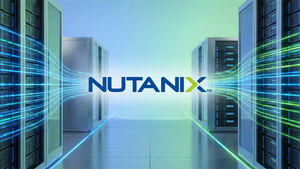
Customer platform provider HubSpot (NYSE: HUBS) reported revenue ahead of Wall Streets expectations in Q3 CY2025, with sales up 20.9% year on year to $809.5 million. Guidance for next quarter’s revenue was better than expected at $829 million at the midpoint, 0.5% above analysts’ estimates. Its non-GAAP profit of $2.66 per share was 2.9% above analysts’ consensus estimates.
Is now the time to buy HUBS? Find out in our full research report (it’s free for active Edge members).
HubSpot (HUBS) Q3 CY2025 Highlights:
- Revenue: $809.5 million vs analyst estimates of $785.7 million (20.9% year-on-year growth, 3% beat)
- Adjusted EPS: $2.66 vs analyst estimates of $2.59 (2.9% beat)
- Adjusted Operating Income: $161.5 million vs analyst estimates of $157.3 million (19.9% margin, 2.6% beat)
- Revenue Guidance for Q4 CY2025 is $829 million at the midpoint, roughly in line with what analysts were expecting
- Management raised its full-year Adjusted EPS guidance to $9.61 at the midpoint, a 1.2% increase
- Operating Margin: 1.4%, up from -1.4% in the same quarter last year
- Customers: 278,880, up from 267,982 in the previous quarter
- Market Capitalization: $24.49 billion
StockStory’s Take
HubSpot’s third quarter results were overshadowed by a notable market selloff, despite revenue and adjusted earnings coming in above Wall Street expectations. Management highlighted that customer growth was driven by ongoing platform consolidation, multi-hub adoption, and momentum among larger enterprise clients. CEO Yamini Rangan pointed to “years of product investment, strong partner alignment and rising brand awareness amongst upmarket decision-makers” as key contributors to growth. The quarter also saw significant traction from embedded AI features, with customers leveraging new marketing, sales, and data tools to improve performance outcomes.
For the upcoming quarters, HubSpot’s outlook is shaped by continued investment in AI-powered capabilities, evolving pricing strategies, and the expansion of its usage-based monetization model. Management believes that the company’s core growth levers—platform consolidation, multi-hub adoption, and upmarket traction—remain intact, while emerging drivers like credits and core seats are expected to become more influential. CFO Kathryn Bueker noted, “We have a clear framework for how we monetize credits,” emphasizing that these new pricing and product structures are intended to unlock future growth as customers increase their AI and automation usage.
Key Insights from Management’s Remarks
Management attributed Q3 performance to progress in AI-driven product launches, increased customer adoption across platform hubs, and the early impact of new usage-based pricing initiatives.
-
AI product integration gains traction: HubSpot rolled out over 200 new AI-powered features, including agents and connectors, with strong uptake among customers. CEO Yamini Rangan reported that embedded AI tools led to higher marketing conversion and improved sales win rates, citing a “10% improvement in deals closed for customers using AI features in Sales Hub.”
-
Platform consolidation drives sales: The company benefited from organizations streamlining their tech stacks, favoring HubSpot for unified customer data and lower total cost of ownership. Rangan described equal pull from cost savings, integrated data, and AI adoption as the main motivations for consolidation.
-
Multi-hub adoption accelerates: A larger share of customers subscribed to three or more core hubs, reflecting growing demand for comprehensive solutions. Management noted, “43% of Pro Plus installed base now subscribe to our 3 core hubs, up 4 points year-over-year.”
-
Upmarket momentum continues: Deals with larger enterprises grew, supported by tailored product capabilities and AI-driven workflows. Management highlighted a significant win with global education firm QS, which replaced legacy CRM systems in favor of HubSpot’s AI-first approach.
-
Early traction for credits and seats: Usage-based pricing via credits and expanded core seat functionality is beginning to show positive signals. Customers using agents and data features are progressing from included credits to paid usage, with Rangan stating, “Credits tie our growth directly to customer value.”
Drivers of Future Performance
HubSpot’s guidance is led by further AI adoption, usage-based pricing, and momentum in seat expansion and multi-product engagement.
-
Expansion of AI and agents: Management emphasized that embedding AI into all hubs and launching new agents are expected to increase customer engagement, drive higher conversion rates, and expand use cases, setting the foundation for recurring upsell opportunities.
-
Growth in usage-based monetization: The introduction of credits as a universal pricing mechanism and ongoing seat upgrades are forecasted to become more meaningful contributors to revenue and net revenue retention, especially as customers utilize more AI-driven features across the platform.
-
Risks from macro and platform shifts: Management acknowledged that macroeconomic headwinds, evolving customer buying cycles, and the migration of large customers to new pricing models could introduce variability. The timing for net new annualized recurring revenue (ARR) to translate into accelerated revenue growth remains uncertain, as CFO Bueker explained that “it will take repeating quarters of net new ARR growth above revenue for revenue to inflect.”
Catalysts in Upcoming Quarters
In the next quarters, our analyst team will focus on (1) the monetization trajectory of new AI-powered agents and usage-based credits, (2) the pace of seat upgrades and multi-hub adoption across both SMB and upmarket segments, and (3) execution on integrating XFunnel and expanding AEO (Answer Engine Optimization) tools. The evolution of customer retention and net revenue retention will also be central to our assessment.
HubSpot currently trades at $402.99, down from $464.30 just before the earnings. Is the company at an inflection point that warrants a buy or sell? See for yourself in our full research report (it’s free for active Edge members).
Stocks That Trumped Tariffs
Donald Trump’s April 2025 "Liberation Day" tariffs sent markets into a tailspin, but stocks have since rebounded strongly, proving that knee-jerk reactions often create the best buying opportunities.
The smart money is already positioning for the next leg up. Don’t miss out on the recovery - check out our Top 6 Stocks for this week. This is a curated list of our High Quality stocks that have generated a market-beating return of 183% over the last five years (as of March 31st 2025).
Stocks that made our list in 2020 include now familiar names such as Nvidia (+1,545% between March 2020 and March 2025) as well as under-the-radar businesses like the once-micro-cap company Kadant (+351% five-year return). Find your next big winner with StockStory today.
StockStory is growing and hiring equity analyst and marketing roles. Are you a 0 to 1 builder passionate about the markets and AI? See the open roles here.





